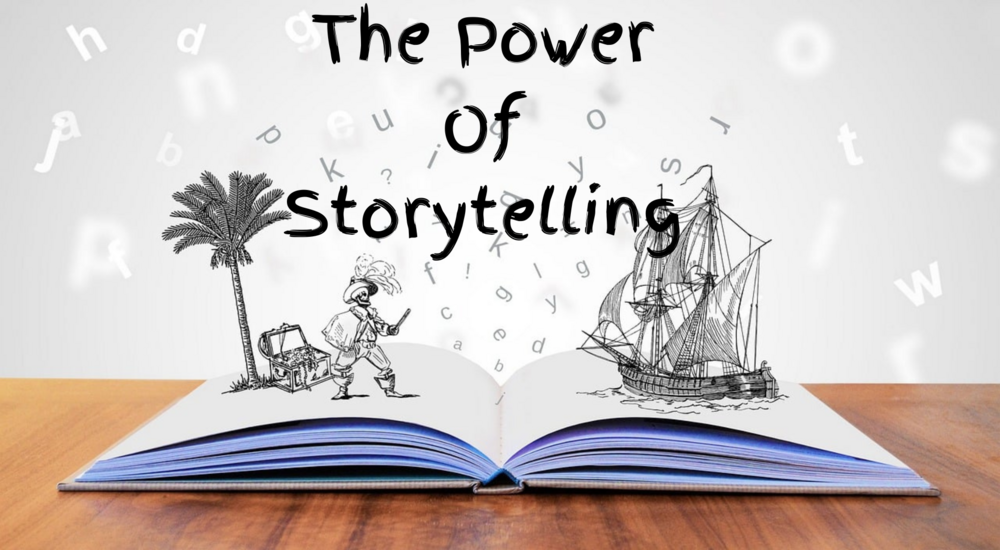Storytelling has always been a primary component of human culture since the time of their existence. It is a powerful tool used to captivate, inspire, and educate. In terms of education, it is a weighty matter in enhancing the learning experience for students. Through narrative art forms, teachers can develop a rich and captivating environment that fosters engagement, critical thinking, and creativity.
If the introduction so far sparks the curiosity inside you, so stick around. We will explore the power of storytelling in education, highlighting its importance and numerous benefits to students and teachers.
5 Reasons Why Storytelling Is So Vital In The Education System
Let’s dive deeper into why telling stories is vital in the education system.
1. Captivating And Engaging
Storytelling has a unique ability to capture students’ attention and encourage them to contemplate. By presenting information in a narrative form, tutors can make complex concepts more relatable and easier to understand. It promotes a genuine interest in learning.
2. Enhancing Imagination And Creativity
Telling stories enhances imagination and creativity. When learners get exposure to narratives, they feel inspired to ponder beyond the limits of textbooks. This activity gives birth to innovative ideas and solutions to real-world problems.
3. Developing Emotional Intelligence
Stories invoke emotions and allow students to feel a connection with characters and situations. Tutees develop empathy, compassion, and emotional intelligence by experiencing various emotional journeys through the narrator’s depiction. It is essential for the development of personal and social skills. Besides this, taking university assignment help is vital to get you through the hectic academic responsibilities. So, if you’re struggling with hectic homework, don’t hesitate to seek professional assistance from expert assignment writers.
4. Building Cultural Awareness
Telling stories provides a platform to explore various cultures, traditions, and perspectives. Through tales from different backgrounds, pupils gain a broader understanding of the world, promoting tolerance, respect, and cultural awareness.
5. Enhancing Language And Communication Skills
Tales offer a rich language experience and expose students to new vocabulary, sentence structures, and communication styles. Students improve their language skills by actively participating in storytelling activities, including listening, speaking, reading, and writing.
6 Best Benefits of Storytelling for Students:
Following are the six benefits students can reap through narrative art.
1. Better Understanding
Telling stories helps students understand complex concepts by presenting meaningful, engaging, and relatable information. Through narratives, philosophical ideas become easier to grasp.
2. Promotes Memory Retention
Stories engage multiple regions of the brain, making information more memorable. Pupils are more likely to retain and recall data when they connect facts and ideas within a narration.
3. Strengthen Critical Thinking
Narration encourages learners to think critically, analyze situations, and make connections. They develop analytical and problem-solving skills by examining characters’ motivations, conflicts, and objectives.
4. Increased Engagement And Participation
Tutees develop a sense of excitement, encouraging active participation from them. When emotionally invested in a story, learners feel more motivated to contribute, ask questions, and engage in discussions.
5. Boost Communication Skills
The narrator’s depictions allow learners to express their thoughts, ideas, and emotions. They practice effective communication, articulation, and public speaking by retelling or adapting stories.
6. Development Of Empathy And Social Skills
Tales often involve human experiences, dilemmas, and emotions. Students develop empathy, understanding, and social skills by placing themselves in the character’s shoes. This activity encourages a sense of community and cooperation.
5 Reasons How Storytelling Helps Teachers:
Below are the five causes of how telling tales helps teachers’ teaching process.
1. Facilitating Classroom Management
Telling stories is an effective classroom management tool for teachers. They can create a focused and attentive learning environment by involving students in exciting stories and minimizing distractions.
2. Inspires Student Participation
Tales provides a platform for tutors to encourage student participation and active engagement. Teachers can involve students in the learning process through interactive narration techniques like role-playing, group discussions, or creative projects. It promotes a collaborative and positive classroom environment.
3. Personalizing Learning Experiences
Every student has unique learning preferences and abilities. Telling tales allows educators to personalize the learning experience by adapting narration to suit the needs of individual students. By incorporating various elements into the narrative, like visual stuff or hands-on activities, teachers can cater to diverse learning styles and ensure that every student feels included and valued. Besides, one more thing you can personalize is your homework with the help of top nursing assignment writing services. The online professional assistance providers will perfectly cater to your academic requirements and deliver a masterpiece.
4. Develop A Healthy Teacher-Student Connection
Stories can create a solid emotional bond between tutors and tutees. Teachers can share personal examples or using stories that resonate with students’ experiences. It will develop a connection based on trust, empathy, and understanding. It will further enhance the learning experience and encourage students to participate and seek support when required actively.
5. Foster Values and Morals
Tales often convey essential life lessons, values, and moral principles. Educators can utilize storytelling to foster positive values and ethical behaviour in students. Teachers can inspire students to implement those qualities in their lives by presenting emphatic, honest, and best characters.
What Makes Storytelling So Effective?
Storytelling is an effective educational tool for four significant reasons:
1. Emotional Connection
Tales can evoke emotions and create a memorable learning experience. When students feel emotionally connected to the narrative, they are more likely to retain information and make meaningful connections.
2. Meaningful Learning
Narration provides a context for learning, making information more relevant and relatable. Students can understand their practical applications and real-life significance by placing facts and concepts within a narrative framework.
3. Multisensory Engagement
Storytelling engages multiple senses, such as listening, visualizing, and imagining. This multisensory experience inspires learning by activating various brain areas.
It also teaches learners to about mindfulness.
4. Long-lasting Impact:
Narration has a lasting impact on students’ memories and understanding. When information is presented in a narrative form, it becomes more meaningful and memorable, allowing students to recall and apply knowledge long after the story has been told.
Closure
Storytelling is a powerful tool that enhances education by captivating students’ attention, fostering imagination and creativity, and developing critical thinking skills. It also promotes cultural awareness. For teachers, storytelling facilitates classroom management, encourages student participation, personalizes learning experiences, strengthens teacher-student connections, and develops values and morals.
The effectiveness of narration lies in its ability to create emotional connections, engage multiple senses, and leave a long-lasting impact. By harnessing the power of tales, tutors can create diverse and rich learning environments that inspire pupils to become lifelong learners.

